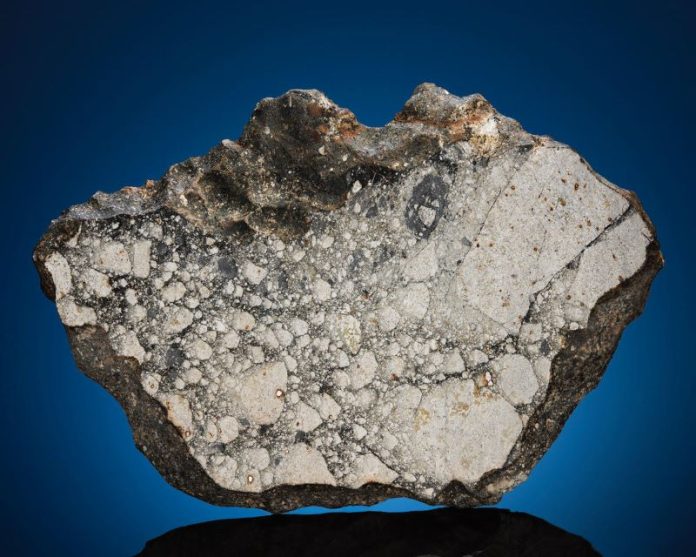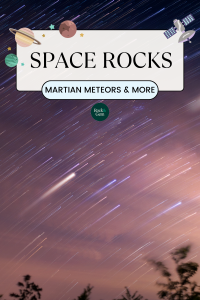
Space rocks are fascinating; especially from Mars. But you don’t have to go to outer space to see them. NASA hopes to land the first humans on Mars by the 2030s and calculates it will take two to three years for a crewed mission to travel the more than 234 million miles back and forth from the red planet.

Did you know that one of the largest pieces of Mars on Earth is part of one of the world’s best collections of meteorites and asteroids at the Maine Mineral and Gem Museum?
What’s A Meteorite?
Meteorites are fragments of natural material that fell to Earth from space. They are among our rarest and oldest (4.5 million years old) rocks and can come from the Moon or Mars, or from asteroids (small rocky objects that orbit our Sun just like planets but don’t have an atmosphere).
Studying meteorites helps us understand the origins of star formation and our solar system. Evidence from meteors has shown that some amino acids, the ‘building blocks of life,’ form in space. Plus, it’s fun!

Courtesy Maine Mineral & Gem Musem
How Do Meteorites From Mars Get Here?
Powerful impacts by comets or asteroids can loosen chunks of the Martian surface and eject it into space, where it ends up in orbit and on a collision course with Earth. Only chunks big enough to survive passing through the Earth’s atmosphere reach the surface.
Martian Chronicles
We have defined three types of Martian meteorites: Shergottite (igneous rocks named for an 1865 meteor that fell in Shergotty, India), nakhlits (igneous rocks rich in augite from El-Nakhla, Egypt, and chassignite (after an 1815 meteor in Chassigny, France).
The Meteoritical Society says 277 ‘Martian meteorites’ have been found around the world, from A to Z, including Antarctica and Zufar, Oman.
Mars is one of the most exotic substances on our planet. Less than 500 pounds of it are known to exist.
Taudenni 002
The world’s largest uncut Martian meteorite was found in 2021 in Mali, near Taoudenni, a remote salt-mining center 400 miles from Timbuktu, by a meteorite and desert truffle hunter (now there’s a career).
Scientists call the 32-pound (14.5 kg) meteorite Taoudenni 002 (the first meteorite was found in 2007) and have classified it as a shergottite type composed primarily of pyroxene, olivine and maskekynite (the impact glass whose bubbles can contain Martian atmosphere).
Taoudenni 002 can be seen at The Maine Mineral & Gem Museum (mainemineralmuseum.org), directly across the room from the largest known piece of the Moon other than the Moon itself. The museum’s Stifler Collection of Meteorites has space rocks from Mars and the asteroid belt, and more meteorites from the Moon than every natural history museum in the world – combined!
This story about space rocks previously appeared in Rock & Gem magazine. Click here to subscribe. Story by L.A Sokolowski.












